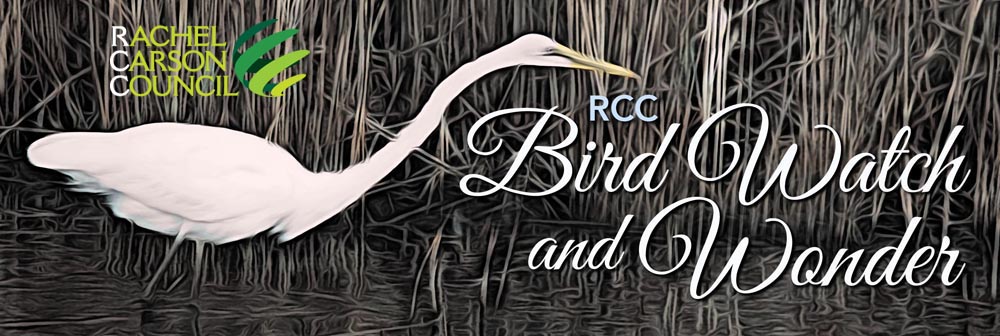 | | | In this bitter winter, you can take some comfort in our January issue of Bird Watch and Wonder. You are not alone. The U.S. Fish and Wildlife Service (USFWS) has released the most recent authoritative count of those of us in the United States who observe and care about birds, regardless of the weather. There are about 100 million Americans over the age of 16 who watch, feed or photograph birds. That’s a whopping 35% of the U.S. population, nearly double the number of the 2016 count. It’s particularly good news for the environment since birding and environmental pioneers like Rachel Carson and Roger Tory Peterson helped popularized ecological awareness after World War II. 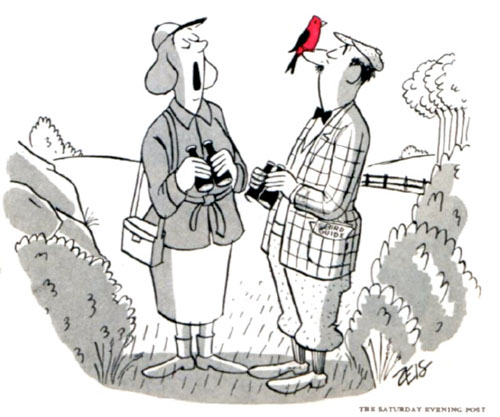 And the birding world is increasingly diverse with prominent Black birders and authors like Christian Cooper and RCC National Advisory Board member Drew Lanham driving the spread of birding beyond the stereotypical cartoon set. More inclusive bird watching is also growing elsewhere as you can see in Camille Baker’s reports on the Black birding group, Flock Together, in Britain. And the birding world is increasingly diverse with prominent Black birders and authors like Christian Cooper and RCC National Advisory Board member Drew Lanham driving the spread of birding beyond the stereotypical cartoon set. More inclusive bird watching is also growing elsewhere as you can see in Camille Baker’s reports on the Black birding group, Flock Together, in Britain.
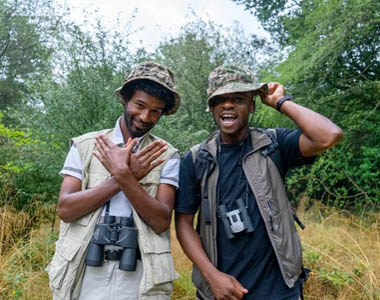 All this concern has had a real impact on protecting birds who remain under assault from habitat loss, toxic chemicals, and global climate change. As you will see in our “Climate and Ecology” section, new research shows that the landmark Clean Air Act, passed as a result of the rise of modern environmental movement in the 1960s, has not only saved human lives, it has also saved an estimated 1 1/2 billion birds. All this concern has had a real impact on protecting birds who remain under assault from habitat loss, toxic chemicals, and global climate change. As you will see in our “Climate and Ecology” section, new research shows that the landmark Clean Air Act, passed as a result of the rise of modern environmental movement in the 1960s, has not only saved human lives, it has also saved an estimated 1 1/2 billion birds.
Help from us humans has also brought joys like the return of puffins to Eastern Egg Rock in Maine and the continued spread of osprey who were originally saved by the work and warnings of Rachel Carson and Roger Tory Peterson. Nearly eliminated by DDT, osprey are now flourishing with over a half million found across every continent, except Antarctica. In her talk reported in “Bird Findings,” Dr. Jeanne Wiebenga tips her hat to Carson and Peterson and describes how osprey who were totally absent until 2010 from Chautauqua County in upstate New York are now flourishing there. On their own, birds are amazingly adaptive, resilient, and, yes, tough creatures who offer instructive qualities in the face of the anthropocentric hazards we have created. Snowy Owls, of course, are adapted to Artic snowscapes and are famed for following the movements of lemmings and feasting on them. But when shifts in lemming populations or extreme conditions cause the snowies to head south (as in Maine), they shift their tastes to bigger meals and relish the plentiful supply of ducks, grebes, gulls, and even loons. Other birds have developed ways to fend or scare off larger predators, as Ross Feldner describes in his latest offering, “Mob Mentality,” on mobbing behavior, as when crows gather to drive off a hawk that threatens their young. 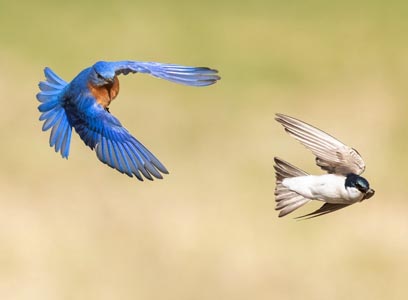 These days, much of bird behavior is captured in photos or film by those folks among our 100 million whose interest in birds is to take pictures of them. Be sure to add some wonder and awe to your day as you look in the “Art of Birds” at the best bird photos of 2024 from the Cornell Lab’s Macauley Library. These days, much of bird behavior is captured in photos or film by those folks among our 100 million whose interest in birds is to take pictures of them. Be sure to add some wonder and awe to your day as you look in the “Art of Birds” at the best bird photos of 2024 from the Cornell Lab’s Macauley Library.
As you peruse our January Bird Watch and Wonder while the temperatures plunge outside, you may want to grab a copy of Margaret Renkl’s The Comfort of Crows: A Backyard Year (Spiegel and Grau, 2023). Renkl’s luminously written and careful, caring year-long observations of every living thing in her backyard begins in the “dead” of winter. But, literally and metaphorically, her yard, yours and mine are alive. “The cold roots of the sleeping trees along the streambed are even now taking in water, One day soon that water will rise and spring into the world in a rush of tight green leaves poised to unfurl. Everything that waits is also preparing itself to move.” For those who stop and observe with care, even the coldest winter can offer hope. | | | | | | | | 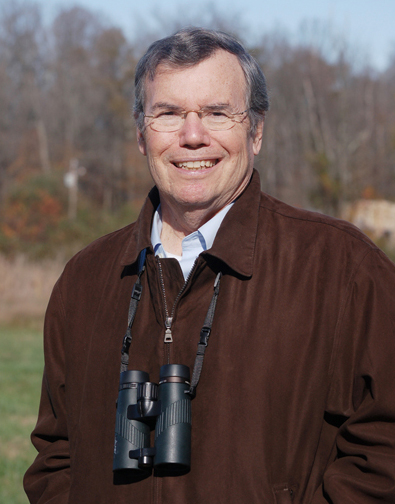 Bob Musil is the President & CEO of the Rachel Carson Council and author of Rachel Carson and Her Sisters: Extraordinary Women Who Have Shaped America’s Environment (Rutgers, 2016) and Washington in Spring: A Nature Journal for a Changing Capital (Bartleby, 2016). He is also the editor of the forthcoming annotated edition from Rutgers University Press of Rachel Carson’s Under the Sea-Wind with his Introduction, updated marine science, and historic and contemporary illustrations and photographs. Bob Musil is the President & CEO of the Rachel Carson Council and author of Rachel Carson and Her Sisters: Extraordinary Women Who Have Shaped America’s Environment (Rutgers, 2016) and Washington in Spring: A Nature Journal for a Changing Capital (Bartleby, 2016). He is also the editor of the forthcoming annotated edition from Rutgers University Press of Rachel Carson’s Under the Sea-Wind with his Introduction, updated marine science, and historic and contemporary illustrations and photographs. | | | | | | A Third of American Adults Are Birdwatchers, According to Nationwide Survey Around 96 million people in the U.S. closely observed, fed, or photographed birds; visited public parks to view birds; or maintained plantings and natural areas around the home for the benefit of birds in 2022. That’s more than 35% of the nation’s population aged 16 and over. The estimated total number of birdwatchers is more than double the figure cited in the previous USFWS survey, conducted in 2016. | | | | | | | | HIGH HOPES FOR OSPREYS: Presentation Reveals County Resurgence in Birds “The more clearly we can focus our attention on the wonders and realities of the universe about us, the less taste we shall have for destruction.” — Rachel Carson More than 20 people got a taste of the wonders that Carson was writing about during a presentation on the Ospreys of Chautauqua County recently. | | | | | | | | A Flurry of Research Gives New Insight into Elusive Snowy Owls Project SNOWstorm is tracking the rare winter visitors’ every move. An aura of mystery surrounds the comings and goings of snowy owls in Maine. The first birds show up between October and December in areas reminiscent of their summer hunting grounds on the Arctic tundra: frozen salt marshes, sand dunes, rocky headlands, blueberry barrens, mountaintops, even airport runways. They may stay for a few months or disappear within days. Some winters, only a handful of owls are seen; in others, hundreds appear. | | | | | | | | Can Black Paint Help Birds Avoid Wind Turbines? A new study will evaluate the effects of contrast painting on wind turbine rotor blades. In Glenrock, Wyoming, three dozen wind turbines are each getting a single blade painted black. The new study will evaluate how this paint job increases visibility—and reduces risks—for eagles, other birds, and bats. Led by PacifiCorp with the Renewable Energy Wildlife Institute (REWI) and research partners, the study shows how conservation and wind energy generation can go hand in hand. | | | | | | | | What Conservation Sounds Like New bioacoustic tools are revolutionizing scientific research and enabling much quicker conservation efforts around the globe. The Eastern Black Rail is a subspecies of bird that’s one of the most elusive creatures a wildlife biologist can choose to study. Adults are the size of a human fist. Chicks are the size of golf balls. Both are dark and shy, the better to hide among the dense marsh grasses under which they skulk and scurry. The birds are maddeningly difficult to lay eyes on. Search YouTube, which has hours of video of pretty much everything, and you’ll find just eight videos of Eastern Black Rails. | | | | | | | | | | How a Landmark Environmental Law May Have Quietly Saved a Billion Birds The Clean Air Act, the sweeping federal law designed to control air pollution, has been celebrated for saving millions of human lives since it was first enacted in 1963 and expanded four more times. Its checks on industrial and tailpipe pollutants are expected to prevent more than 230,000 deaths in 2020 alone, along with millions of asthma attacks and thousands of ER visits during a year of a raging pandemic. | | | | | | | | To Catch Voles Under the Snow, Great Gray Owls Must Overcome an Acoustic Mirage New research into the weird ways snow distorts sound offers new hints about the extraordinary hunting strategies of a winter phantom—the Great Gray Owl. Perhaps no species of owl is as superbly adapted for hunting in snow as the Great Gray. Found throughout the boreal forests of the Northern Hemisphere, Great Gray Owls dine primarily on small mouselike rodents called voles. | | | | | | | | Woodpeckers For Fire Recovery? A New Online Tool Tells You How Imagine a burned forest in California. The charred remains of trees, the soot on the forest floor and the smoke in the air might make it seem like all is lost. Far from it. While fires negatively affect many species of animals, they also spawn new and complicated ecosystems with rich biodiversity. In California, the black-backed woodpeckers (Picoides arcticus) are a ubiquitous presence in burned-over forests. | | | | | | | | Mob Mentality There are times when bigger isn’t necessarily better. If you have ever seen a smaller bird or a group of smaller birds chasing a larger bird, for example a group of crows chasing a hawk, then you’ve seen “mobbing.” Many bird species mob a predator by cooperatively attacking or harassing it, usually to protect their offspring. While mobbing has evolved independently in many species, it only tends to be present in those whose young are frequently preyed upon. Certain bird species will send out a mobbing call, like an all points bulletin, to summon others nearby to the attack. | | | | | | | | Reimagining the American Avocet Phil Wheeler uses repeating patterns to unite a hungry wader with otherworldly terrain. There’s a storybook quality to John James Audubon’s work that intrigues illustrator Phil Wheeler. Birds interact with each other, and with their environment, like a narrative unfolding. “They’re scientific,” he says, and yet “they’re very alive.” Wheeler pored over Audubon’s paintings—“I had a real problem choosing one,” he says—before picking the American Avocet for its gangly charm. “They’re so awkward, but at the same time quite elegant.” | | | | | | | | Macaulay Library’s Best Bird Photos 2024 There are more than 50 million photos in the Cornell Lab of Ornithology’s Macaulay Library archive. Here are some of the best from the past year. For our 2024 photo essay we’re celebrating wonderful photos in five themes: the high-speed action of Thrill of the Chase, a look at our avian neighbors with Birds in Built Environments, a sampler platter of food types with Feeding Time, spectacular poses in Birds Never Cease to Amaze, and a peek at some of the world’s rarest birds with Rare Glimpses. | | | | | | | | There’s a Birding Group for Everyone In early 2020, as Black Lives Matter protests were taking place worldwide and the pandemic was beginning to unfold, Ollie Olanipekun and Nadeem Perera founded Flock Together, a group for birders of color in Britain. “I go to these remote towns where there’s no people of color, there’s no diversity,” Mr. Olanipekun, 38, said. “On your own, those looks you’re getting feel like daggers.” Numbers provided a sense of safety. | | | | | | | | Bird-friendly Maple Syrup Boosts Vermont Forest Diversity & Resilience As the sun rises, the ethereal song of a wood thrush echoes through Bourdon Maple Farm’s 55-hectare (135-acre) forest in Woodstock. A bright scarlet tanager wings about the canopy as hungry yellow-bellied sapsuckers drill into tree bark. At the height of maple sugaring season, birds provide a comforting soundtrack for the farm’s head of operations, sales and marketing, Meg Emmons. | | | | | | | | Seabird Conservation Mostly Works, Comprehensive New Data Set Shows Fifty years ago, ornithologist Stephen Kress had a bold vision for Eastern Egg Rock, an island off the coast of Maine. He wanted to restore the island’s former colony of Atlantic puffins that hunters had wiped out in the 1880s. This kind of seabird restoration had never been done before, but Kress was determined to try. In 1973, he began transporting Atlantic puffin (Fratercula arctica) chicks, or pufflings, from Canada onto the island. | | | | | | | | | | | | Wood Stork Storks often represent new beginnings in folklore so to start the New Year we have the Wood Stork. They were a symbol of new beginnings in Christianity as well as Ancient Egyptian and Native American cultures. Because storks have lived on Earth for roughly 50 million years, they’ve appeared in many ancient cultures. In Christianity, several folklores discuss storks delivering babies. There are even paintings that depict these birds delivering baby Jesus to Mother Mary and so many ancient Christians saw storks as a symbol of new hope and life. | | | | | | | | Momentary Meditations are published every Monday to awaken what Rachel Carson called “the sense of wonder” and what Albert Schweitzer called “a reverence for life.” Looking deeply into our interdependence with all life on earth helps us know what we must do. In our harried world, these meditations are meant to serve as a renewable resource for compassion and love. Harlequin Travelers - These Harlequin ducks traveled confidently in rough coastal waters. Their light-hearted name seemed inappropriate for the seriousness of their struggle to survive and thrive in dangerous, and often seriously polluted, Northeast coastal waters. | | | | | | | | The Comfort of Crows 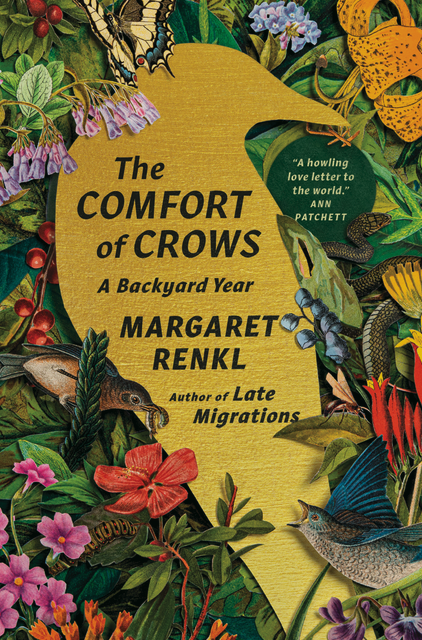 From the author of Late Migrations comes a luminous book tracing the passing of seasons, personal and natural. From the author of Late Migrations comes a luminous book tracing the passing of seasons, personal and natural.
In The Comfort of Crows, Margaret Renkl presents a literary devotional: fifty-two chapters that follow the creatures and plants in her backyard over the course of a year. As we move through the seasons—from a crow spied on New Year’s Day, its resourcefulness and sense of community setting a theme for the year, to the lingering bluebirds of December, revisiting the nest box they used in spring—what develops is a portrait of joy and grief: joy in the ongoing pleasures of the natural world, and grief over winters that end too soon and songbirds that grow fewer and fewer.
Along the way, we also glimpse the changing rhythms of a human life. Grown children, unexpectedly home during the pandemic, prepare to depart once more. Birdsong and night-blooming flowers evoke generations past. The city and the country where Renkl raised her family transform a little more with each passing day. And the natural world, now in visible flux, requires every ounce of hope and commitment from the author—and from us. For, as Renkl writes, “radiant things are bursting forth in the darkest places, in the smallest nooks and deepest cracks of the hidden world.” With fifty-two original color artworks by the author’s brother, Billy Renkl, The Comfort of Crows is a lovely and deeply moving book from a cherished observer of the natural world. Click here to purchase | | | | | | The New Animated Film ‘Migration’ Draws Inspiration From Birds' Real Journeys 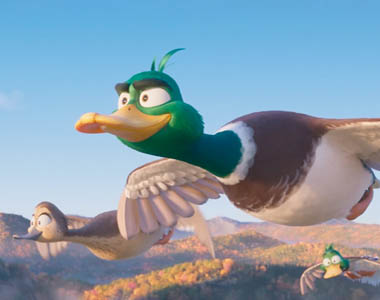 Here’s what the Universal Pictures film got right (and wrong) about one Mallard family’s epic adventure. Here’s what the Universal Pictures film got right (and wrong) about one Mallard family’s epic adventure.
Hot on the heels of fall migration comes Migration, a Universal Pictures animated film debuting this Christmas about a family of Mallard ducks. If you haven't seen a trailer yet, the basic plot goes like this: Though the dad, named Mack, is satisfied with his quiet, safe, and predictable life in a New England pond, the mom, Pam, is eager to show their kids, Dax and Gwen, more of the world. When the Mallards meet a group of migrating ducks with tales of far-off places, Pam persuades Mack to take off for their own family adventure to Jamaica. Click here to read more | | | | | | Birding Festivals and Events A great way to enjoy bird watching is by going to festivals—they’re organized to get you to great birding spots at a great time of year, and they’re a great way to meet people. Experts and locals help you see more birds, and you’ll meet other visitors who share your hobby. While you’re there, keep an eye out for Cornell Lab representatives, as we do attend several festivals each year. | | | | | | | | The January 2024 issue of Bird Watch and Wonder was produced by Ross Feldner | | | | | |  The Rachel Carson Council Depends on Tax-deductible Gifts From Concerned Individuals Like You. Please Help If You can. The Rachel Carson Council Depends on Tax-deductible Gifts From Concerned Individuals Like You. Please Help If You can. | | | |  Sign Up Here to Receive the RCC E-News and Other RCC Newsletters, Information and Alerts. Sign Up Here to Receive the RCC E-News and Other RCC Newsletters, Information and Alerts. | | | | | | | | | | | |